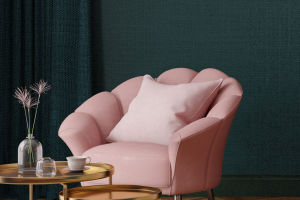The history of industrial design spans just over a century, but when we look back at the classic chairs in design history, it's akin to diverse notes dancing within the melody of the industrial age.
A chair's significance in history transcends being mere consumer symbols.
It embodies the emotional stance behind design, standing at the forefront of industrial development and placing this cutting-edge craftsmanship onto suitable consumer products. While chairs, in terms of function, are similar to tables and lighting fixtures, their portrayal of different historical scenes and design sentiments delineates a unique narrative.
1. Open-minded Bauhaus Chair
In 1925, Hungarian designer Marcel Breuer, a graduate of the Bauhaus design school, custom-crafted furniture for his teacher, Wassily Kandinsky's residence.
Drawing inspiration from a bicycle's handlebars, Breuer chose chairs as the medium to apply the same technique, resulting in the birth of the world's first tubular steel chair, the "Wassily Chair." This marked the first instance of using bent steel tubing, a novel technology, and material, in chair design.
Crafted from polished stainless steel tubing with high-grade leather straps, the chair adopts the open, minimalist Bauhaus style, making it both simple and distinctive.
2. OMK Stacking Chair
The metal seat and backrest of the OMK Stacking Chair are not only painted in vibrant colors but also adorned with numerous perforations, making it both fun and practical. British furniture designer Rodney Kinsman, although not widely known, created one of the most popular chairs of the 1970s, the OMK Stacking Chair.
As the founder of the UK-based OMK design studio, Kinsman gained attention in the mid-1960s with his design of the F Relaxer chair. Throughout his career, his furniture maintained a rigorous rationalist style, imparting a sense of practical solidity.
This chair's hallmark lies in its frame, which consists of a bent steel tube supporting pressed steel plates for the seat and backrest, adorned with neat perforations. Lightweight, durable, and stackable up to 25 layers, the OMK Stacking Chair draws inspiration from Hans Coray's 1939 Landi Chair, but its epoxy-coated seat adds a contemporary pop art flair.
3. B3 Chair—Later Dubbed the "Wassily Chair"
The B3 Chair was one of the first products to emerge prominently from the Bauhaus school in Dessau. It largely solidified Bauhaus's reputation as a leader in functionalist design.
Additionally, it was one of the earliest designs to utilize tubular steel, which greatly facilitated innovation in furniture design due to its resilient, lightweight, and sleek properties. Initially produced by the avant-garde Austrian furniture company Thonet, it was mostly made of black or white fiber cloth or metal mesh, available in both foldable and non-foldable variants.
Evolving technology posed a formidable challenge on how to redefine the form and manufacturing of chairs, and the B3 Chair model served as a response. Despite its intricate structure and delicate contours formed by slender electroplated steel tubes, it resembles a technical sketch. Nevertheless, it's substantial volume and sleek style have already crafted a perfect chair.


